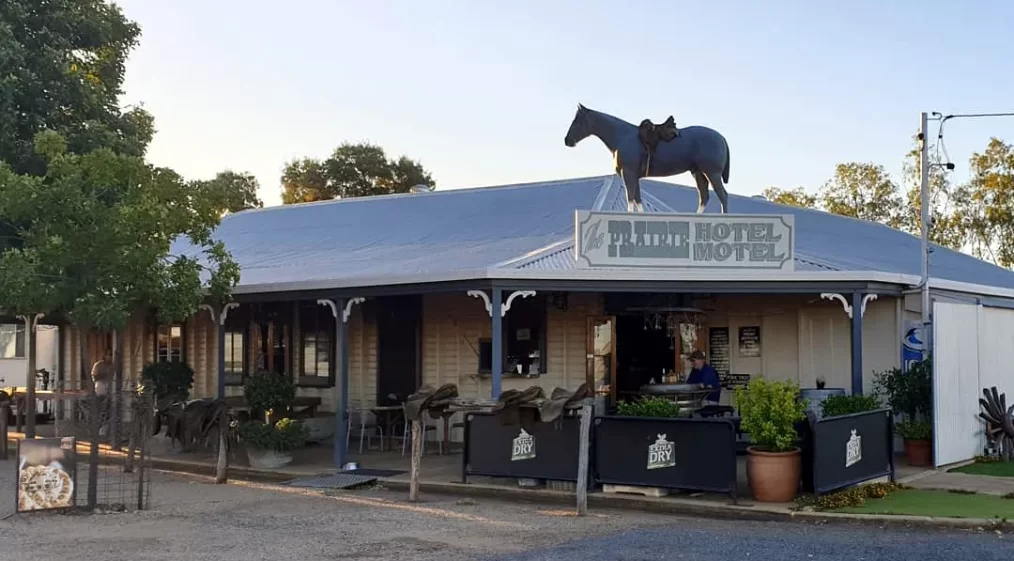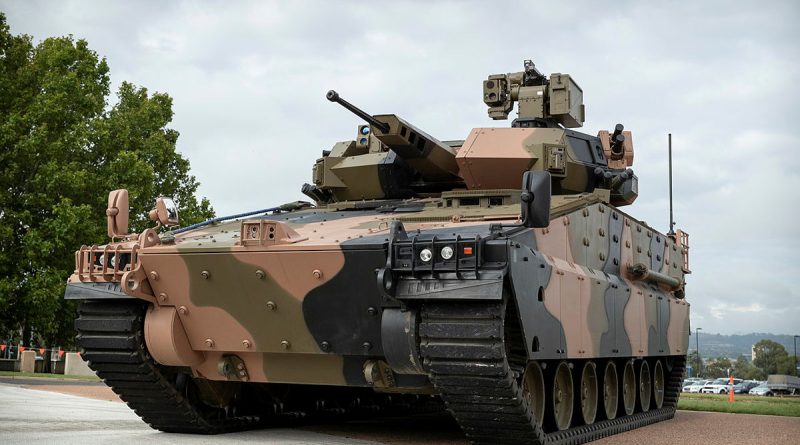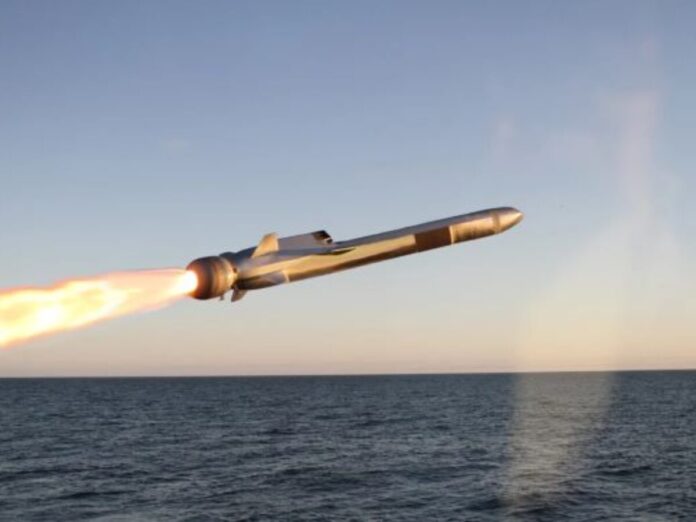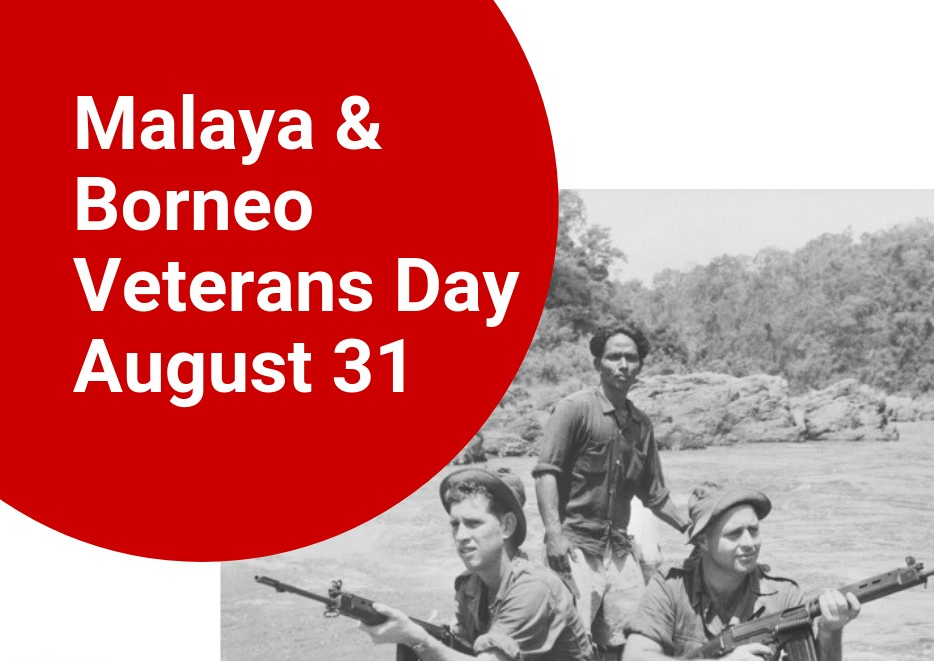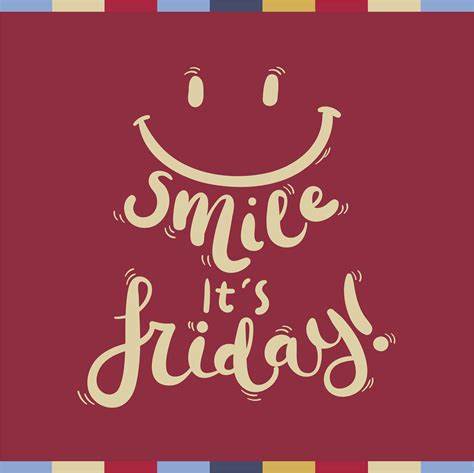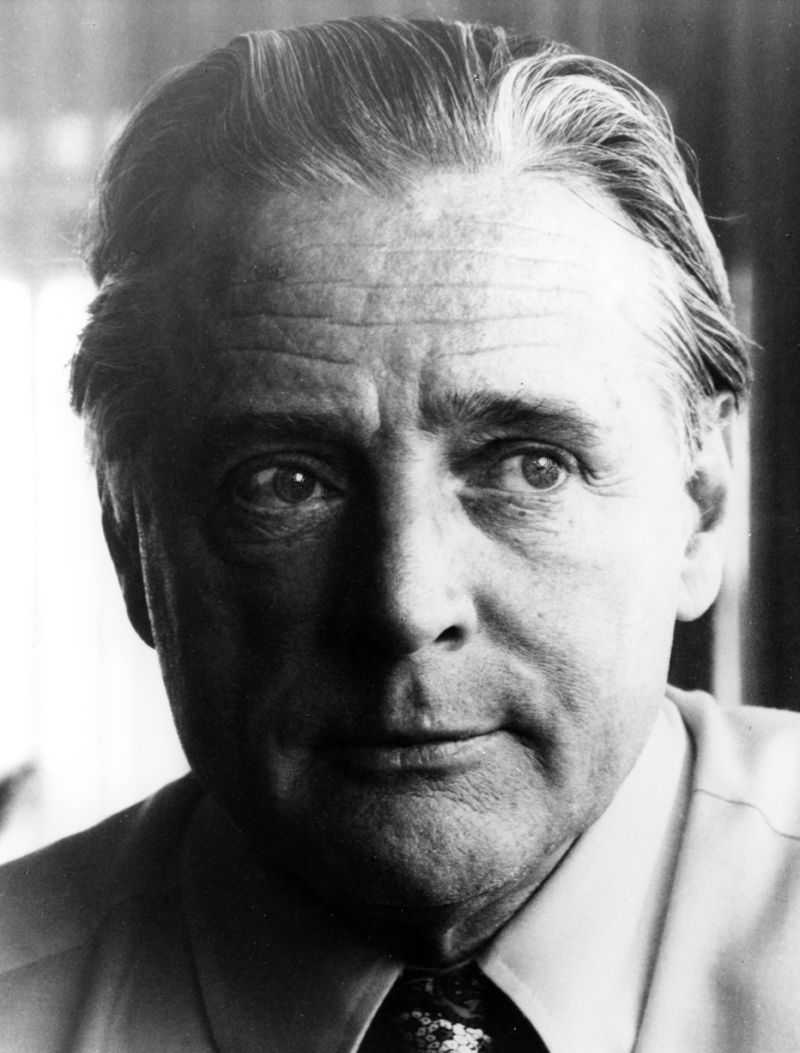ED: This Current Affair story is a bit of self-indulgence. I am a great fan of country pubs along with my good caravaning mate Geoff Hall (Ex 35 Sqn). Each year we set off on a historic pub tour or as our wives call it, our annual pub crawl. Over quite a number of years we have visited many country pubs with the criteria that they were built before 1900. We all agree that these pubs are the life blood of the towns, 95% of the publicans have amazing personalities and are prepared to share the pubs history and provide information about things we must see around the town.
Japan is on the verge of becoming the world’s third-largest military spender, with a proposed defence budget of 8.5 trillion yen ($59 billion) for the upcoming financial year. This unprecedented move is driven by increasing military threats, particularly from its authoritarian neighbour, China.
The proposed defence budget by Japan’s Defence Ministry is a staggering 8.5 trillion yen ($59 billion), marking an unprecedented increase in military expenditure. This budget is a crucial component of a five-year military expansion plan, with the ambitious goal of doubling the nation’s annual defence spending to approximately 10 trillion yen by 2027. This significant boost in defence funding reflects Japan’s growing concerns over regional security and its commitment to enhancing its military capabilities.
Japan’s strategic focus with this budget surge is on strengthening its defence, particularly in the southwestern islands, where tensions with Beijing have been escalating. The budget allocates 970 billion yen ($6.7 billion) specifically for “strike-back capabilities,” emphasizing Japan’s intent to bolster its military presence in areas of strategic importance. Key investments include long-range missiles and advanced Aegis-class destroyers, aimed at ensuring Japan can respond effectively to any potential threats.
In the modern era, no defence budget is complete without a focus on cutting-edge technology. Japan is heavily investing in unmanned systems and artificial intelligence (AI) as part of its military expansion. The budget includes 103 billion yen ($710 million) for the development of drones, showcasing Japan’s commitment to reducing human casualties and enhancing the capabilities of its defence forces. Additionally, 314 billion yen ($2.17 billion) is earmarked for new multipurpose compact destroyers, further highlighting Japan’s focus on modernizing its military fleet.
Japan’s defence budget surge is a clear indication of the nation’s response to growing regional tensions and its determination to secure its interests amid an increasingly complex global security environment. With these investments, Japan is positioning itself as a formidable military power, ready to address the challenges of the 21st century.
Media Release – 30/08/2024
Today marks a pivotal moment in Geelong’s history, signalling a new era in our economic and industrial landscape. Known historically for our automotive industry, with Ford establishing its presence here in 1928, Geelong faced a significant challenge when Ford announced in 2013 that it would cease manufacturing, affecting about 900 local jobs.
However, we now stand on the brink of a major transformation with the opening of Hanwha’s new facility, the first phase of a project that will play a crucial role in both our local economy and national defence. This facility will produce 28 self-propelled howitzers, known as the Huntsman, and 14 supply vehicles. These will be joined by two additional howitzers and another supply vehicle currently being built in Korea, with delivery to the Australian Army coinciding with the start of local production in just a few months.
This is just the beginning. The second phase of this facility will see the construction of 129 infantry fighting vehicles, the Redbacks. When fully operational, Hanwha’s facility is expected to support 1,800 jobs, underscoring its significance not only to Geelong but to Victoria and Australia as a whole. This development not only strengthens Geelong’s industrial base but also contributes critically to our nation’s defence capabilities. The Huntsman and Redbacks will significantly enhance the Australian Army, with the Redbacks scheduled to enter service in 2027, years ahead of the original timeline.
Rod Thompson – Newcastle Weekly
A plan to manufacture and service missiles at Williamtown is expected to generate $100 million in economic benefits to the region.
The Australian Government revealed on Thursday 22 August of its intention to build a factory in the Newcastle Airport precinct, in partnership with Kongsberg Defence Australia.
Construction of the facility, anticipated to start later this year, represents a leap forward for the Australia Defence Force (ADF).
It’s understood Naval Strike Missiles (NSM) and Joint Strike Missiles (JSM) will be produced at the plant.
The $850 million project is also estimated to create more than 500 jobs in the construction phase and, once complete, secure employment for 100 people.
“This is about investing in our advanced, high-tech manufacturing industry and developing our sovereign defence industrial base in areas which have been identified as strategic priorities, which in turn means we can accelerate capability delivery to the ADF,” Minister for Defence Industry and Capability Delivery Pat Conroy said.
“We cannot deliver the generational uplift in capability outlined in the National Defence Strategy without our industry partners, and we look forward to working with Kongsberg Defence Australia as a Guided Weapons and Explosive Ordnance (GWEO) Strategic Partner.”
The GWEO Enterprise is backed by a commitment of up to $21 billion over the coming decade through the government’s 2024 Integrated Investment Program.
It delivers on priorities in the 2024 National Defence Strategy to both develop the ADF’s ability to precisely strike targets at longer range and manufacture munitions in Australia.
The JSM – which can be fitted to the F-35A aircraft – and NSM are modern anti-ship cruise missiles designed to defeat highly-capable enemy warships.
Both can be deployed against land-based targets, too.
The NSM will enhance the maritime and land strike capabilities of Hobart class destroyers and Anzac class frigates, and replace the Harpoon anti-ship missile, supporting the increased lethality of the enhanced surface combatant fleet.
Locally, the announcement was welcomed by the Newcastle Liberals.
“Much like the previous government, it’s encouraging to see the Hunter is being recognised as an ideal location for defence industry development,” Lord Mayoral candidate Callum Pull said.
“It’s a significant moment for our city and our region.
“We look forward to the positive impact this project will have on our local economy and the future opportunities it will bring.
“The Greens once again demonstrated their lack of understanding of our national and regional interests by opposing crucial defence industry developments in the Hunter.”
Frontline Summery
Every year on 31 August, Australia observes Malaya and Borneo Veterans’ Day, a solemn occasion dedicated to remembering the service and sacrifice of Australian military personnel who participated in two significant conflicts in Southeast Asia: The Malayan Emergency and the Indonesian Confrontation. This date, which coincides with Merdeka Day (Freedom Day), marks the independence of the Federation of Malaya from the United Kingdom in 1957, serving as a poignant reminder of the intertwined history and shared struggles in the region.
The Malayan Emergency: Australia’s Longest Military Commitment of the 20th Century
The Malayan Emergency, a guerilla war fought between Commonwealth forces and the Malayan Communist Party (MCP), officially began on 16 June 1948. The conflict was triggered by the assassination of three estate managers in Perak by MCP guerrillas, leading the British colonial government to declare a state of emergency. However, the response to the insurgency was initially sluggish. The underlying economic, political, and social grievances of Malaya’s Chinese community, who were largely sympathetic to the MCP, remained unaddressed for years. The situation escalated significantly following the assassination of British High Commissioner Sir Henry Gurney on 6 October 1951, prompting a more robust Commonwealth military intervention.
Australia’s involvement in the Malayan Emergency commenced in 1950, when the Royal Australian Air Force (RAAF) deployed transport aircraft, bombers, and personnel to Singapore. The RAAF undertook crucial roles, including cargo runs, troop transportation, paratroop drops, and the dissemination of propaganda leaflets. The Royal Australian Navy (RAN) began its operations in Malayan waters in 1955, providing additional support to the Commonwealth forces. By 1956, Australian ground troops were engaged in anti-communist operations in Malaya, although direct encounters with guerrillas were infrequent.
The communist threat began to diminish by the end of 1959, with many MCP members retreating across the border into Thailand. The Malayan Emergency was officially declared over on 31 July 1960, yet Australian forces continued to serve in Malaya until 1963. Throughout the conflict, Australia provided not only air and infantry support but also vital artillery and engineering assistance. An airfield construction squadron notably built the main runway at Butterworth, which became a significant military asset.
The Malayan Emergency, which lasted 13 years, stands as Australia’s longest continuous military engagement of the 20th century. The Australian War Memorial’s Roll of Honour lists the names of 39 Australians who lost their lives during the Emergency, most of whom were from the Australian Army.
The Indonesian Confrontation: A Shadowed Conflict
The Indonesian Confrontation, or Konfrontasi, was a less publicized but equally significant conflict that arose from Indonesia’s attempts to destabilize and ultimately dismantle the newly formed Federation of Malaysia, established on 28 September 1963. The roots of this conflict can be traced back to the Brunei Rebellion in December 1962, when Indonesian-supported insurgents attempted to overthrow the ruling authority in Brunei. Though the rebellion was swiftly quelled, it marked the beginning of a broader Indonesian campaign, with small groups of armed volunteers infiltrating Malaysian Borneo.
By 1964, the conflict had escalated, with Indonesian regular army units becoming involved. Initially, Australia was hesitant to commit troops to Borneo, partly due to concerns that the conflict might spread to the border between Papua New Guinea and Indonesia. Nevertheless, Australia agreed to assist in defending the Malay Peninsula against external threats. Australian forces participated in operations to counter Indonesian paratroop and seaborne incursions, which, though largely unsuccessful, posed a risk of broader escalation.
In January 1965, in response to the growing threat, Australia decided to deploy soldiers to Borneo. The British military, in cooperation with Commonwealth forces, initiated cross-border operations under the codename Claret. These operations, which remained classified at the time, involved gathering intelligence and launching pre-emptive strikes to keep Indonesian forces on the defensive.
The first contingent of Australian infantry arrived in Borneo in March 1965. These troops, along with subsequent reinforcements, engaged in combat operations on both sides of the border, often in challenging jungle terrain. Australian forces suffered casualties, including from landmines, and faced the harsh realities of a covert and complex conflict. In addition to infantry, Australia deployed two Special Air Service (SAS) squadrons, several artillery batteries, and Royal Australian Engineers detachments. The RAN also played a crucial role in the surrounding waters, providing naval support to the operations.
Due to the sensitive nature of cross-border operations, the Confrontation received minimal coverage in the Australian media, and the full extent of Australia’s involvement remained largely unknown to the public at the time. The conflict concluded with the signing of a peace treaty between Indonesia and Malaysia in Bangkok in August 1966, formally ending hostilities.
The Australian War Memorial’s Roll of Honour records the names of 22 Australians who died during the Indonesian Confrontation, reflecting the sacrifice of those who served in this lesser-known but significant chapter of Australia’s military history.
A Legacy of Service
The observance of Malaya and Borneo Veterans’ Day on 31 August serves as a powerful reminder of Australia’s commitment to peace and stability in Southeast Asia. It is a day to honour the courage, resilience, and sacrifice of the Australian men and women who served in the Malayan Emergency and the Indonesian Confrontation, ensuring their legacy is remembered for generations to come.
ED: An Essay by a student at Carlingford High School in 2013.
Introduction
On November 8, 1965, the Battle of Gang Toi marked a significant early clash between Australian troops and the Viet Cong during the Vietnam War. This encounter, involving A Company, 1st Battalion, Royal Australian Regiment (1 RAR), was part of a larger military initiative known as Operation Hump. The battle took place in the Gang Toi Hills, located in the northern Bien Hoa Province of Vietnam, where the Australian forces faced a well-fortified Viet Cong bunker system defended by Company 238. The Battle of Gang Toi was one of the first significant engagements between Australian forces and the Viet Cong, highlighting the intensity and complexity of the Vietnam conflict. This essay explores the strategic context, the battle itself, and its aftermath, illustrating the challenges and sacrifices made by Australian soldiers during this critical phase of the Vietnam War.
Operation Hump and the Strategic Context
Operation Hump was a large-scale military operation conducted by combined American and Australian forces, with the objective of sweeping through and clearing out Viet Cong positions in the region. The operation aimed to disrupt the Viet Cong’s control over key areas in southern Vietnam, thereby weakening their influence and operational capabilities. However, the operation faced several challenges, including difficult terrain, the presence of well-prepared enemy defences, and the inherent difficulties of coordinating multi-national forces in a complex combat environment.
The Battle of Gang Toi was one of the first encounters between Australian troops and the Viet Cong during Operation Hump. It provided a stark reminder of the harsh realities of the Vietnam conflict, where the Viet Cong’s familiarity with the terrain and their use of guerrilla tactics often placed conventional forces at a disadvantage. The battle also highlighted the need for thorough planning and coordination in military operations, lessons that would be painfully learned by the Australian forces in the heat of battle.
The Battle
A Company, 1 RAR, led by Major John Healy, advanced into the Gang Toi Hills on November 8, 1965. The mission for the day was to continue on a westerly bearing, searching for enemy activity and engaging the Viet Cong as opportunities arose. Intelligence had indicated the presence of large enemy concentrations in the area, and the company moved cautiously, aware of the potential dangers ahead.
The soldiers of A Company were soon confronted by a heavily fortified Viet Cong bunker system, skillfully concealed within the dense jungle. The enemy, well-prepared and deeply entrenched, responded with intense machine gun fire as the Australians advanced. The initial contact was devastating for the Australians, with the lead section of 1 Platoon coming under heavy fire as they approached the enemy position. Lance Corporal Richard (Tiny) Parker was among the first to be killed, and several others were wounded in the initial exchange.
As the battle intensified, Major John Healy, the Company Commander, ordered a flanking attack to relieve the pressure on 1 Platoon. Second Platoon, led by a young officer, moved forward to execute the manoeuvre, despite the overwhelming enemy firepower. The Viet Cong, armed with automatic AK-47s and well-positioned within their bunkers, unleashed a withering barrage on the advancing Australians.
During the flanking attack, Private Peter (Gilly) Gillson, a machine gunner, was hit by enemy fire as he attempted to cross the buttress roots of a large tree. He fell forward into the line of fire, and despite the brave efforts of his comrades, including Sergeant Col Fawcett, to pull him to safety, Gillson succumbed to his wounds. The intensity of the enemy fire and the difficulty of manoeuvring through the thick jungle made it impossible for the Australians to recover his body at the time.
As the battle wore on, the Australians began to run low on ammunition, and the situation became increasingly dire. The Viet Cong, sensing an opportunity, started to outflank the Australian position, forcing the soldiers of A Company to withdraw under heavy fire. Artillery support was called in to within 25 meters of the Australian lines, providing a temporary reprieve and allowing the company to consolidate its position.
Casualties and Missing Soldiers
The battle resulted in significant casualties for the Australian forces. In addition to the six soldiers who were injured, two men, Private Richard Parker and Private Peter Gillson, were reported missing. Eyewitnesses believed that both men had been killed in action, making them the first Australian soldiers to be declared missing in Vietnam. Their loss had a profound impact on their comrades, who were eager to return to Gang Toi and recover their fallen mates. However, the operational realities of the Vietnam War meant that this was not possible, and the bodies of Parker and Gillson were left behind as the battle drew to a close.
The decision not to return to Gang Toi was a difficult one for the soldiers of A Company. The US Brigade Commander, facing heavy casualties in other parts of the operation, terminated the mission, effectively ending any hope of recovering Parker and Gillson’s bodies at that time. The loss of these two soldiers weighed heavily on the minds of their comrades, and their sacrifice became a symbol of the high cost of the Vietnam War.
Aftermath and Legacy
The Battle of Gang Toi stands as a testament to the challenges faced by Australian forces in Vietnam. The battle underscored the importance of thorough planning, coordination, and reconnaissance in military operations. The lack of initial reconnaissance and the insufficient coordination between companies severely hampered the effectiveness of the Australian forces during the battle, leading to unnecessary casualties and the loss of two soldiers whose bodies could not be recovered for many years.
The legacy of the Battle of Gang Toi is also a reminder of the sacrifices made by Australian troops during the Vietnam War. It wasn’t until over 40 years later that the remains of Private Richard Parker and Private Peter Gillson were finally discovered and repatriated to Australia for burial. Their return brought closure to one of the many painful chapters of the Vietnam War and served as a reminder of the enduring impact of the conflict on those who served.
In conclusion, the Battle of Gang Toi was a critical encounter in the Vietnam War, highlighting the intensity of the conflict and the challenges faced by Australian forces. The battle demonstrated the importance of preparation and coordination in military operations and underscored the high cost of the war for those who fought in it. The sacrifices made by the soldiers of A Company, 1 RAR, particularly the loss of Parker and Gillson, continue to be remembered as a poignant reminder of the bravery and dedication of Australian troops during the Vietnam War.
A.A.A.D.D.- Age-Activated Attention-Deficit Disorder.
This is how it manifests:
I decide to water my garden. As I turn on the hose in the driveway, I look over at my car and decide it needs washing.
As I start toward the garage, I notice mail on the porch table that I brought up from the mailbox earlier.
I decide to go through the mail before I wash the car.
I lay my car keys on the table, Put the junk mail in the garbage can under the table, and notice that the can is full.
So, I decide to put the bills back on the table and take out the garbage first…
But then I think, Since I’m going to be near the mailbox When I take out the garbage anyway, I may as well pay the bills first.
I take my check book off the table and see that there is only one check left. My extra checks are in my desk in the study, So I go inside the house to my desk where I find the can of Pepsi I’d been drinking.
I’m going to look for my checks, but first I need to push the Pepsi aside So that I don’t accidentally knock it over.
The Pepsi is getting warm, And I decide to put it in the refrigerator to keep it cold.
As I head toward the kitchen with the Pepsi, A vase of flowers on the counter Catches my eye–they need water.
I put the Pepsi on the counter and discover my reading glasses that I’ve been searching for all morning. I decide I better put them back on my desk, but first I’m going to water the flowers.
I set the glasses back down on the counter, fill a container with water and suddenly spot the TV remote. Someone left it on the kitchen table.
I realize that tonight when I go to watch TV, I’ll be looking for the remote, But I won’t remember that it’s on the kitchen table, So I decide to put it back in the den where it belongs, but first I’ll water the flowers.
I pour some water in the flowers, but quite a bit of it spills on the floor.
So, I set the remote back on the table, get some towels and wipe up the spill.
Then, I head down the hall trying to Remember what I was planning to do.
At the end of the day: The car isn’t washed, the bills aren’t paid, there is a warm can of Pepsi sitting on the counter, The flowers don’t have enough water, there is still only 1 check in my check book, I can’t find the remote, I can’t find my glasses, And I don’t remember what I did with the car keys. Then, when I try to figure out why nothing got done today, I’m really baffled because I know I was busy all day, And I’m really tired.
I realize this is a serious problem, And I’ll try to get some help for it, but first I’ll check my e-mail….
The Texas Tribune – Jake Holden
Iran has significantly increased its stockpile of uranium enriched to near weapons-grade levels, raising alarms in the international community. This development defies global demands for transparency and restraint, further intensifying concerns about Iran’s nuclear ambitions and the potential for a regional arms race.
As of August 27, Iran’s uranium stockpile has surged to 164.7 kilograms enriched up to 60%, marking an increase of 22.6 kilograms since the last report in May. This escalation brings Iran dangerously close to possessing the material necessary for nuclear weapons, a development that has sent shockwaves through diplomatic channels and international watchdogs.
Uranium enriched to 60% purity is perilously close to the 90% threshold required for nuclear weapons. The International Atomic Energy Agency (IAEA) has expressed deep concern over this advancement, with its chief warning that Iran now has sufficient uranium to produce several nuclear bombs. This proximity to weapons-grade material underscores the gravity of the situation and the potential threat it poses to global security.
Iran’s relationship with the IAEA, the UN body responsible for monitoring nuclear activities, has deteriorated significantly. Tehran has not been cooperating fully with the IAEA, and recent reports indicate that surveillance cameras installed by the agency have been disrupted, while experienced inspectors have been barred from facilities. These actions suggest an increasing lack of transparency and a growing rift between Iran and the international community.
Compounding concerns, Iran has been installing more advanced centrifuges, which are capable of enriching uranium more efficiently. Eight cascades of IR-6 centrifuges have already been installed at the Fordo site, with additional cascades being set up at the Natanz facility. This enhancement of Iran’s enrichment capabilities further escalates the threat level, making it increasingly difficult for the international community to monitor and control Iran’s nuclear activities.
Iran’s motives behind this aggressive nuclear advancement remain a topic of intense debate. On one hand, Tehran asserts that its nuclear program is purely for peaceful purposes, including energy production and medical research. However, the level of enrichment and the secrecy surrounding its activities cast doubt on these claims. Some analysts suggest that Iran’s actions are driven by a desire for self-defence, aiming to deter potential aggressors by signalling its capability to develop nuclear weapons if necessary.
On the other hand, there is a growing belief that Iran might be using its enriched uranium stockpile as a bargaining chip in future negotiations, particularly with the United States. By advancing its nuclear program, Iran could be positioning itself to extract concessions in exchange for limiting or reversing its enrichment activities. This strategy could involve lifting economic sanctions or securing security guarantees from Western powers.
Regardless of Iran’s true intentions, the rapid increase in enriched uranium and the installation of advanced centrifuges have escalated tensions in the Middle East and beyond. The international community faces a critical challenge in addressing Iran’s nuclear activities, balancing the need for diplomatic engagement with the risk of further destabilization. Whether Iran’s actions are driven by a defensive strategy or a calculated move to enhance its bargaining position, the stakes have never been higher. The coming months will be crucial in determining whether diplomatic efforts can avert a potential crisis or if the world is on the brink of a new era of nuclear proliferation.
As the Vietnam War dragged on, Australians began to question the initial justifications for their country’s involvement. The fear that communism, particularly from China, posed a direct threat to Australia had been a strong motivator early in the conflict. However, as the war progressed and national servicemen began to suffer casualties, public support started to wane.
In 1966, Prime Minister Harold Holt visited Washington and assured President Lyndon B. Johnson that Australia was “all the way with LBJ.” This declaration reflected the strong public backing of the war at that time. When President Johnson visited Australia later that year, he was greeted by large, enthusiastic crowds. Yet, even then, there were signs of dissent, with militants throwing paint and rotten eggs at the President’s limousine and making death threats, though these incidents were isolated.
Despite growing unease, Vietnam and conscription did not prevent Holt’s Liberal-Country Party coalition from winning a landslide victory in the October 1966 election. However, beneath the surface, a significant anti-war movement was beginning to take shape, driven primarily by the younger generation. Baby boomers, particularly university students, became the backbone of this opposition, viewing Vietnam as a disastrous policy pursued by an arrogant, conservative government. As the war dragged on with no clear end in sight, a broader spectrum of Australians began to oppose the war on moral grounds.
The Impact of Television on Public Perception
The Vietnam War became known as the “television war” due to the extensive coverage it received on television. Australians and Americans alike were regularly exposed to graphic images of the conflict, which starkly highlighted the suffering endured by those in Vietnam. The My Lai massacre in March 1968, where a company of U.S. troops murdered 347 civilians in the South Vietnamese hamlet of My Lai, further eroded public support for the war. The atrocity cast doubt on the war’s stated goals of protecting South Vietnam and halting the spread of communism. It also led Australians to question whether their soldiers might be committing similar acts.
By January 1970, the U.S. and Australia were both showing signs of withdrawing from Vietnam, though no specific exit dates had been set. Australia’s position was clearly tied to U.S. actions, leaving many Australians anxious about the future.
The Moratorium Movement
In early 1970, anti-war groups from across Australia convened in Melbourne and agreed to hold a “moratorium,” a term signifying a halt to business as usual. This movement was inspired by a similar U.S. moratorium in October 1969, where over 500,000 Americans protested in 1,200 cities and towns. The Australian moratorium became the largest and most sustained protest movement in the country’s history, with two primary objectives: the withdrawal of Australian troops from Vietnam and an end to conscription.
The movement gained momentum after the Coalition’s victory in the 1969 election, which signalled to many that government policy on Vietnam was unlikely to change for at least three more years. Dr. Jim Cairns, the Shadow Minister for Trade and Industry, emerged as the most visible leader of the moratorium movement. His charisma and intellect galvanized thousands of activists, and he emphasized the importance of maintaining non-violence during the protests.
The moratorium brought together a diverse coalition of groups opposed to the war, including clergy, teachers, academics, unions, politicians, and students. Donations poured in, and while university students had been at the forefront of the anti-war movement, the moratorium attracted thousands of everyday, middle-class Australians. Not everyone supported the movement; its size and intensity were unsettling to many, particularly conservatives like Billy Snedden, the Minister for Labour and National Service, who derided the protesters as “political bikies who pack-rape democracy.”
Despite this opposition, the first moratorium, held in May 1970, was a resounding success. Around 200,000 people participated, with the largest demonstration in Melbourne, where 70,000 people marched peacefully down Bourke Street, led by Cairns. The police remained restrained, and the crowds cheered the demonstrators on. Similar events took place across the country, in cities and rural towns alike.
The second and third moratoriums, held on 18 September 1970 and 30 June 1971, respectively, saw a shift in tone. Left-wing extremists dominated these later protests, leading to smaller turnouts and, in the case of the second moratorium, violence. In Melbourne, police baton-charged protesters, and in Sydney, 173 people were arrested.
The Fallout for Returning Soldiers
The My Lai massacre and the growing anti-war sentiment shifted the focus of many protesters away from the government and onto the soldiers themselves. Unlike the veterans of World War I and II, who were welcomed home as heroes, Vietnam veterans were often met with hostility. Some were spat on, insulted, and even rejected by branches of the Returned Servicemen’s League. This treatment had a severe psychological impact on many veterans, compounding the trauma they had already experienced in Vietnam.
A Defining Moment for Australia
While the moratoriums may not have directly influenced the government’s decision to withdraw troops—Prime Minister John Gorton had already begun the process before the protests—the movement undoubtedly reflected and reinforced a broad collapse in public support for the war. The moratoriums also influenced government policy on conscription, with Cabinet taking steps to reduce the number of draft resisters sent to jail following the first moratorium.
The moratoriums were a defining moment in Australia’s history, marking a significant shift in public attitudes toward authority and war.
Vice President Kamala Harris’ political journey has been marked by mixed results and significant challenges. Despite her impressive resume, Harris has struggled with public perception and complex international issues, raising questions about her potential as a future U.S. leader.
Harris’ simplified explanations of global events, such as Russia’s invasion of Ukraine, have sometimes appeared inadequate, undermining her credibility on the world stage. Moreover, her focus on attacking former President Trump’s foreign policy, while distancing herself from the Biden administration, has left her platform lacking in substantive policy.
The Harris campaign’s embrace of “Brat Girl Summer,” a pop culture trend, highlights a concerning shift towards a vague, vibes-based approach to politics. This strategy, while trendy, fails to address the pressing issues of international relations and national security.
As the U.S. faces a divided political landscape, the potential consequences of a Harris administration are uncertain. With the world watching, the direction of U.S. leadership remains in question, leaving both allies and adversaries on edge. The stakes for global stability, particularly in regions like the Indo-Pacific, have never been higher.

